Note: I wrote this article in 2013. Some of the references are no longer available. I also updated the information on the Critical Path Project and the Keyspots.
The Project
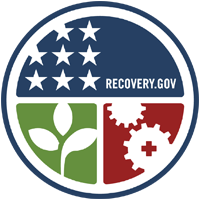
As part of the federal government's Broadband Technology Opportunities Program (BTOP), the city of Philadelphia received a grant to open 77 Public Computer Centers across the city, which they branded with the name "Keyspots". These Keyspots provide open computer and Internet access to the general public.
The goal of this program is to help eliminate the digital divide by enhancing and expanding underserved communities' knowledge of and access to the Internet so they can acquire information about employment, education, health, and community and economic development. The program concentrates primarily in neighborhoods in North, West, and South Philadelphia where the child poverty rate can reach 40% and fewer than half the homes have Internet access.
The Freedom Rings Partnership was created by the participating organizations of this grant to coordinate the implementation strategy at the city level. The goals of the partnership are:
- Establish 77 public computer centers
- Provide over 200,000 hours of hands-on training to 15,000 people at over 130 training locations citywide
- Distribute over 5,000 computers to public housing residents
- Generate 5,000 new broadband household subscribers and 50 small business subscribers
Opening access for free computer and Internet use alone, however, doesn't accomplish much for the community, particularly if most of the members of those communities do not possess the basic knowledge of how to use them. According to the National Center for Education statistics, an estimated 22 percent of Philadelphia adults, ages 16 and older, are lacking basic literacy skills. That makes approximately 250,000 of the 1.1 million adults living in the city, many of which are concentrated in the areas in which these Keyspots will open. Furthermore, as per the Childrens' Partnership Statistics, 72 percent of households in Pennsylvania earning less than $15,000 per year do not own a computer compared to 40 percent of all Pennsylvania's households and 38 percent of all households nationally. Therefore, along with the funding for opening and maintaining all Keyspots, additional funding was released to provide computer training and instruction to Keyspot users.
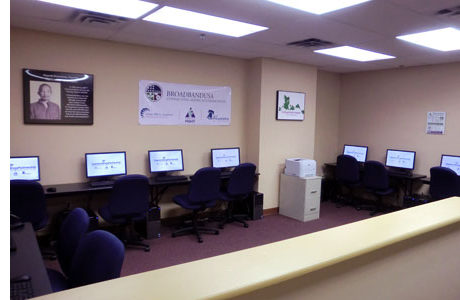
The 77 Keyspots locations are composed of 19 recreation centers, 29 community-based organization sites that work with high-risk populations, 10 homeless shelters, 15 other affordable housing sites, and 4 mobile labs that will reach communities lacking space or the capacity to house a computer center. Therefore, assessing the instructional needs of the learners that will be participating in this project requires more than just designing a simple computer class.
My Role in the Project
The Critical Path Project, the program of the partner organization I work for, is in charge of deploying and managing 27 of the 77 Keyspots. My role is to design and implement computer instruction for those 27 Keyspots.
As part of the planning and deployment of each Keyspot, I coordinate with each organization along with its technical support staff the implementation, scheduling and delivery of computer instruction for their users. Also, I am in charge of managing a staff of 4 Trainers designated to deliver the courses. Each trainer is required to participate in the enrollment process and community outreach activities. Additionally, each Keyspot hired a part-time Web Guide, that is, a person in charge of addressing the immediate needs of the users of the Keyspots.
Since the project consists of collaboration between agencies of the Freedom Rings Partnership, my role involves representing my organization in some of the created committees (or workgroups), which deal with several aspects of the project such as awareness and marketing, creation and management of the project web portal, project evaluation and sustainability. I contribute in some of these workgroups by providing my expertise in defining e-learning strategies and standards, best practices for classroom management, and data collection and evaluation. Additionally, I play a role in organizing and delivering professional development opportunities for the support staff involved in maintaining the everyday use of the computer labs as well as computer instructors.
Needs Assessment(s) – The Keyspots

The information we collected to assess the learning needs of the prospect students was obtained by conducting in-person interviews with program administrators, executive directors, case managers, other support staff and of course, program participants. Also, we conducted surveys among key personnel to assess effective scheduling and space availability. Finally, we used information that is already available about each organization's services, mission and their constituents. The number of questions posed in the interviews focused on the needs of prospective students to acquire computer skills as part of the services they receive in their programs. Furthermore, we investigated the most effective way (or program) that will introduce technology as part of – or in addition to – participation in existing programs.
With the information we obtained from the data collection process, we determined the content of the computer classes to be delivered. The data we collected provided a general profile of typical students that will take computer courses, their needs and literacy level, as well as they type of setting where such courses will be conducted based on organizational mission and culture.
The first step of the needs assessment involved taking a look at the partner organizations in the project. The 27 community service organizations under our management consist of:
- Shelters for the homeless –shelters for the general homeless population, and hospices that cater homeless people in dire health.
- Health service organizations –organizations that provide outpatient health services and mental health services including counseling and support groups.
- Public libraries – some organizations are part of the local public library system or specialized libraries.
- Multiservice organizations – organizations that provide a large range of services, including welfare-to-work programs, adult basic education, English language courses for immigrants, drug and alcohol rehabilitation services, and domestic violence prevention and related support services.
- Organizations that cater the needs of specific communities – activist organizations that advocate for the rights of their constituents, such as people with physical disabilities, ex-offenders, "at-risk" youth, the LGBT community, and the recent immigrant population.
Needs Assessment(s) – The Learners
Who are our students? Following the information gathering process about partner organizations, we collected information about their constituents. We focused on gathering information for the purpose and overall use of the Keyspots in each organization. What that means is, since some organizations provide a wealth of different programs, we specifically look at the programs that implement or promote the use of their Keyspot. With that in mind, our analysis found that in general, Keyspot users are:
- Out-of-school youth and adults who never earned a high school diploma or equivalent – People who lack basic education at high school level, often associated with deficits in basic skills, which can also prevent workers from getting and keeping good jobs.
- High school graduates – High school graduates that have been out of school and/or the labor market for many years. As a result, they may lack key basic skills important in today's workplace.
- Individuals with learning disabilities – There are several types of learning disabilities and many adults who participate in these programs lack basic skills as a consequence of having some form of diagnosed or undiagnosed learning disability. These individuals may also face other challenges, such as the lack of a secondary school credential.
- Prisoners or ex-offenders – Persons who have been incarcerated are disproportionately more likely to lack a high school diploma or have a learning disability, both of which limit employment prospects. However, some x-offenders do possess excellent analytical and technical skills, and some have college education.
- Immigrants – Immigrants account for a large and expanding portion of the American workforce. Many of these newcomers lack English-language skills and some may have received limited education in their home countries. In addition, cultural differences can present obstacles to communication with employers.
And the instructional goals emerge! Overall, these are the fundamental learning needs that both program administrators and participants expressed as priorities:
- Basic computer skills – Courses should accommodate for adult learners who never used a computer.
- Workforce development and job readiness – The courses should impart knowledge of how to use technology in the process of searching for and obtaining employment.
- Adopting the technology – The courses should have students acquire or increase knowledge of what is needed to properly shop, select, acquire and maintain technology in their lives.
- Demystify the Internet – The course should teach what the Internet is, isn't, its many aspects, uses and ways to access it.
- Signing up for Internet service – Courses should prepare students to learn about the available subscription options according to geographic location and budget.
- Safe use of the Internet – Students should learn how to sign up for and use email, and how to protect their privacy online.
- Community building – The courses should demonstrate the use of current technologies to create or join communities of interest.
- Life skills – The classes should encourage students to use technology to manage everyday life, to have a voice, obtain or provide peer support, or search for services, therefore, enhancing their quality of life.
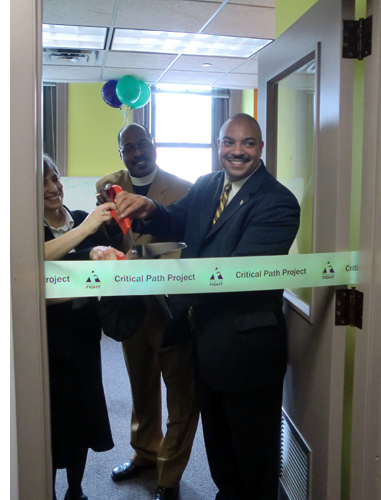
The project is of large complexity and therefore, it poses a few challenges. The most critical challenges found in the needs assessment (from an instructional design perspective) are:
- Time constraints – The program has been funded for only two years. Within that time span the project I work for has to deliver over 9,500 training hours (consumed). The two-year time-span includes the time to assess, design and deploy each Keyspot. That means that the time to start teaching is reduced depending on the time it takes to open each Keyspot.
- The nature of the community that will receive instruction – Delivering courses in a successful manner require more than scheduling a class and expecting students to follow up. The process of delivering the courses requires team work between the computer trainers and program support service staff.
- E-learning implementation – The e-learning strategy for this project requires a blend of existing learning management systems, seasoned with assisted technologies and interface design that accommodates for lower-level literacy. Existing LMS do not provide such specialized interface.
- Data collection vs. ease of access to LMS – Some organizations expressed the desire to collect data about the users when using their LMS, requiring students to sign up and register in order to access resources that teach the basics (i.e., how to use the mouse). This certainly creates a major problem as the registration process makes it impossible for new users to accomplish (since they lack the skills to do so). This requires the assistance of the instructor, which adds a burden to the class.
- Sustainability – Success of this program as measured by the Federal Government is not solely defined by the success of the instructional goals. Additionally, the evaluation process focuses primarily on how this initiative stimulates the economy of the city of Philadelphia. Therefore, the parameters that will be used to emphasize the success of the program for sustainability purposes may not be primarily related to instruction or acquisition of computer skills from the general public, leaving the instructional component of the project on the lower side of the priorities.
Needs Assessment(s) – Evaluation Challenges
We defined a few deadlines as milestones of the project. At those milestones we are to measure the overall success of this initiative by:
- the degree in which Keyspots users demonstrate increased knowledge and use of the computer centers
- the Keyspot users becoming "adopters" of the technology
- Keyspot users furthering their education or employment
- program participants subscribing to Internet services
However, the nature of the underserved communities we will be educating poses a number of challenges that can preclude us from effectively measuring success.
Though the layout to design, implement and evaluate the success of the program has been drafted, many questions arise, especially when considering socioeconomic barriers that might impede many people from these communities afford Internet service, obtain employment or further their education. The indicators should accommodate for new or existing situations that impede students from practicing or using the acquired knowledge. Furthermore, increased use of the computer cannot be measured by increased time spent at the Keyspots since the allotted time for computer use is fixed. Therefore, newly acquired skills should be measured based on increased proficiency in using the limited time that users have to use the Keyspot computers.
Needs Assessment(s) – The Trainers
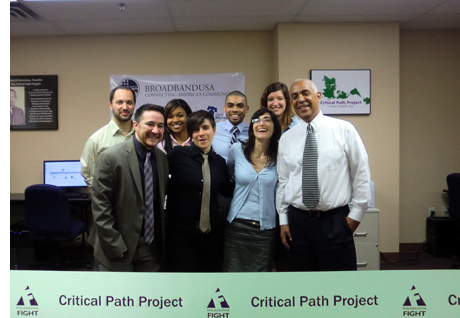
Finding the right kind of computer instructor for this type of training presents a number of challenges. In general (of course, there are exceptions), adult educators and basic literacy instructors know how to impart knowledge to many of these communities, and know how to address the issues of learning differences and low-level literacy. Though their strengths are around thorough knowledge of the populations we intend to teach, many Adult Basic Education instructors tend to lack the technical knowledge or the ability to provide digital literacy. Many experienced computer instructors, on the other hand, have very little knowledge (or patience) to interact with these communities effectively when delivering computer courses, particularly when teaching introductory computer courses. The career path of many computer professionals that impart instruction (in general) is either around corporate training, or around certification programs that deal with people with advanced computer skills. They possess the analytical and logical skills required to impart effective computer instruction, but lack the required knowledge of addressing the needs of the population we will be teaching to.
So how did we choose our trainers? In order to effectively choose instructors and create staff development and training for them to effectively work in this project, we established several fundamental considerations.
- Presentation skills; ability to present a subject in a language and manner that the students understand and feel comfortable with.
- Overall knowledge of and/or experience with the communities that the partner organizations work for.
- Knowledge of current technologies and the ability to quickly learn new emerging technologies.
- Ability to identify the immediate learning needs of the students and flexibility to adapt the presentation to address issues that arise during class.
- Ability to encourage and engage students in class, and deliver classes to specific communities in a non-judgmental manner.
- Ability to identify and demonstrate in detail the steps required to learn the basics.
The staff development and training was designed based on the overall strengths and weaknesses found once they were hired. A professional development series was developed to address the needs and provide support to the trainers in order to deliver classes in an effective manner, manage classroom issues effectively, and learn the necessary software to be taught.
We established a process of interviewing candidates for the Digital Literacy Trainer position and assembled a team of key people that will provide input on each candidate's strengths and weaknesses during the selection process. As part of the selection process, the first round of interviews determined (in summary) their credentials, ability to teach, ability to teach to the target population, and ability to teach computers to the targeted population. After the first round of interviews, each suitable candidate was scheduled to teach a sample class with some of the current staff members of the Critical Path Project acting as students. Finally, we identified and selected the four members of the team of computer trainers, made offers and hired them.
Based on the education and experience of the assembled team, we proceeded to assess the needs for professional development. Advanced knowledge of software was not a priority in the requirement since the ability to quickly learn new technology is a requirement of the position. The assembled team consists of:
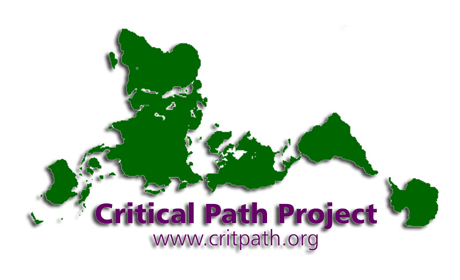
- A trainer with a strong adult basic education background and specializes in math and sciences. Additionally she has experience with work-based education models.
- A trainer with a strong experience with "at-risk" youth. She also has experience working with the prison system.
- A trainer with a background in teaching, organizing and advocating for the youth. Also, he has experience in addiction treatment and counseling and extensive knowledge in media literacy.
- A trainer with a strong experience in adult education, and education and work experience in digital and social media. She is also an advocate for media justice and understands the issues of media access to the general public.
After hiring the team of four trainers, I conducted a professional development needs assessment. We found the following needs:
- Train the Computer Trainer – Initial one-day training was designed to address the immediate needs of a newly designed learning system that never existed before.
- Coaching and shadowing – each trainer has his/her own specialty. Furthermore, other instructors throughout the partnership can share resources, techniques and knowledge of their own specialty among each other.
- Classroom management – Addressing the needs of such diverse and multilevel classes require the acquisition and/or sharing of a number of different techniques and resources.
- Data collection and reporting – The project requires a rather large amount of data to be collected about the students. Collecting information as well as protecting privacy (as per HIPAA regulations, for example) required training instructors on what and how to collect the required information, reconciling the program requirements and individual organization regulations on data collection.
- E-learning and LMS – Implementation of current technologies in the classroom and introducing students to learning management systems
- Sensitivity and diversity training – Many organizations serve populations that require sensitive and non-judgmental delivery of training. Some of these populations are physically and/or mentally vulnerable and require sensitive, supportive training.
- Certification – Each trainer is expected to become ICDL certified.
Having a clear list of needs to be addressed, goals to be reached within the two-year span of the project, and having a clear understanding of the players and their roles, we proceeded to designing the courses, professional development and E-learning strategy. In Part 2 of this case study I will show the results of the design process.
More on the Critical Path project
Update: The Keyspots are now managed by the Philadelphia Office of Adult Education. The Critical Path Project now provides Health Resources Library, Technology Literacy, Basic Adult Education, Employment Services, and Hospitality and Support Services.

